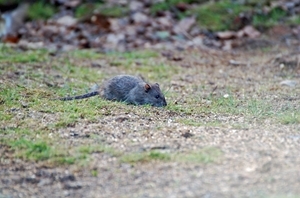 Starting July next year, the legal authorisation for using bromadiolone and difenacoum, the only two second-generation anticoagulant rodenticides (SGARs) currently allowed in open areas and waste dumps, will be withdrawn.
Starting July next year, the legal authorisation for using bromadiolone and difenacoum, the only two second-generation anticoagulant rodenticides (SGARs) currently allowed in open areas and waste dumps, will be withdrawn.
This change was voluntarily initiated by the Campaign for Responsible Rodenticide Use UK (CRRU UK), with the support of the UK biocides regulator, the Health and Safety Executive (HSE). Dr Alan Buckle, Chairman of CRRU, stated that this decision was unanimously made by all CRRU directors to meet the environmental targets of rodenticide stewardship.
“A primary factor leading to this is the stubbornly static incidence of rodenticide residues in around 80 per cent of barn owls, the HSE-nominated sentinel species for annual surveillance,” he explains. “This change will enable a single clear message about SGAR use: None of these products can be applied away from buildings.”
Sales of products containing bromadiolone and difenacoum for use in open areas and waste dumps will stop on 4 July 2024. Products purchased on or before that date will remain authorised for use in open areas and waste dumps until 31 December 2024. After that, it will be illegal to use any SGAR product to treat a rodent infestation not associated with a building.
Manufacturers will update product label instructions accordingly and will continue to promote the use of integrated pest management practices among all rodenticide users. The CRRU Code of Best Practice provides effective methods for rodent management away from buildings, including eliminating harbourage, food and water sources; using non-anticoagulant baits; and employing trapping, shooting and dogs.